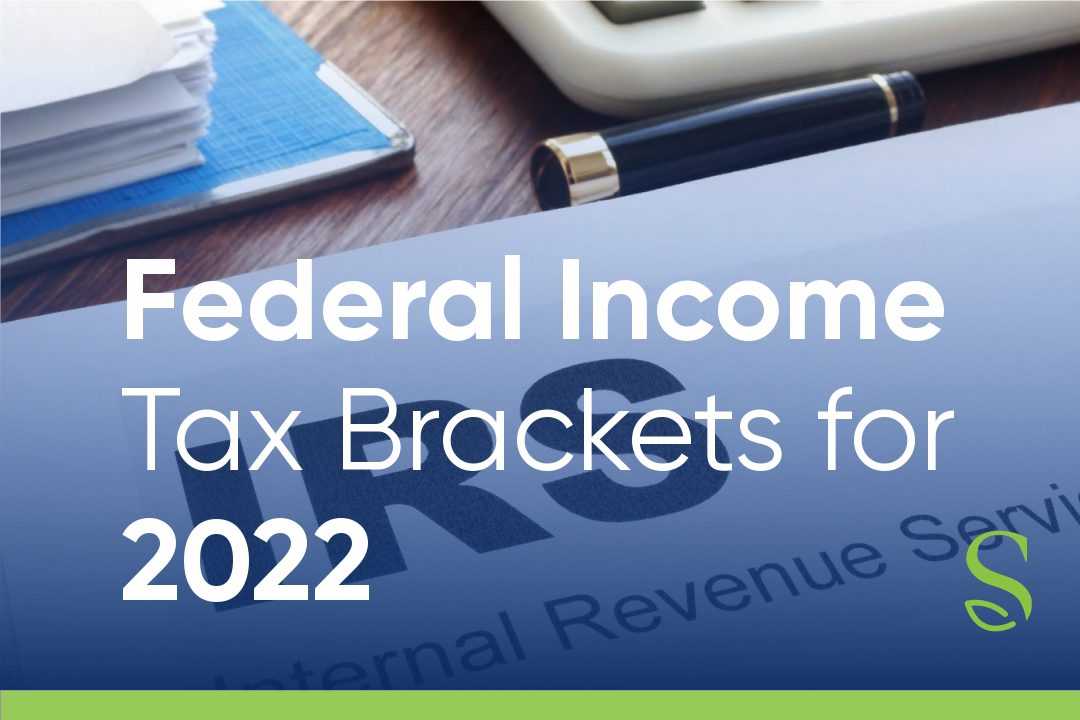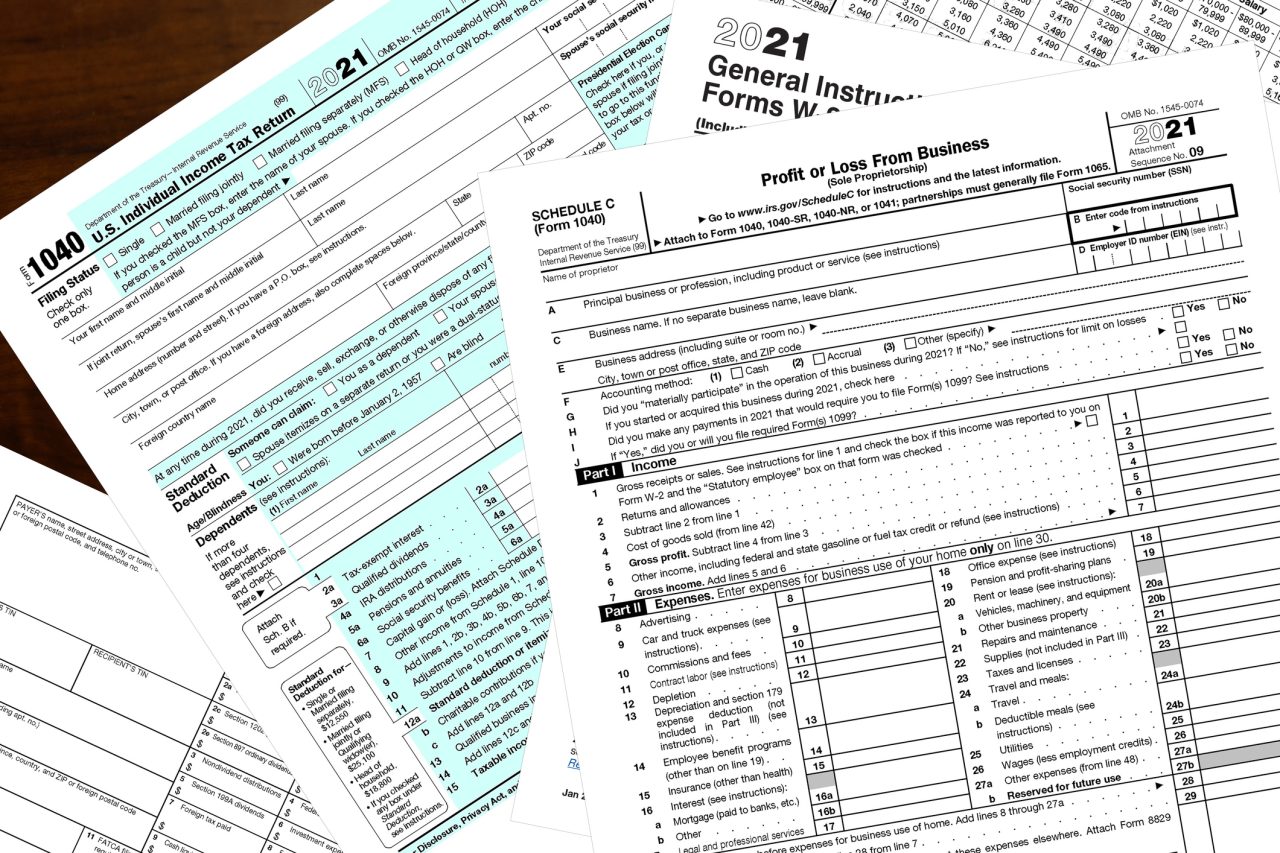
The U.S. has seven federal income tax brackets for the year 2022, which are; 10%, 12%, 22%, 24%, 32%, 35%, and 37% respectively. If you’re one of the lucky few to earn enough to fall into the 37% bracket, that doesn’t mean that the entirety of your taxable income will be subject to a 37% tax. Instead, 37% is your top marginal tax rate. The top marginal income tax rate of 37% is for individuals with a taxable income of above $539,900 for single filers and married couples filing joint returns, above $647,850.
With a marginal tax rate, you only pay that rate on income that falls within a specific range. Consider the 10% bottom tax rate to gain an understanding of how marginal rates operate. All income for single filers between $0 and $10,275 is taxed at a rate of 10%. If your taxable income is $10,550, the first $10,275 is taxed at a rate of 10%, and the final $275 is taxed at the rate for the following bracket (12 percent ).

Do you know the federal income tax brackets for the 2022 tax filing year?
Federal Tax Brackets for 2022
With this in mind, the same procedure would apply to other tax rate percentages. Check out the charts below to see what your top marginal tax rate is for 2022.
Single
10% – $0 to $10,275
12% – $10,276 to $41,775
22% – $41,776 to $89,075
24% – $89,076 to $170,050
32% – $170,051 to $215,950
35% – $215,951 to $539,900
37% – $539,901 or more
Married Filing Jointly
10% – $0 to $20,550
12% – $20,551 to $83,550
22% – $83,551 to $178,150
24% – $178,151 to $340,100
32% – $340,101 to $431,900
35% – $431,901 to $647,850
37% – $647,851 or more
Married Filing Separately Tax Brackets
10% – 0 to $10,275
12% – $10,275 to $41,775
22% – $41,775 to $89,075
24% – $89,075 to $170,050
32% – $170,050 to $215,950
35% – $215,950 to 323,925
37% – $323,925 or more
Head of household
10% – 0 to $20,550
12% – $20,550 to $83,550
22% – $83,550 to $178,150.
24% – $178,150. to $340,100
32% – $340,100 to $431,900
35% – $431,900 to $647,850
37% – $647,850 or more
You can learn more about the above 2022 tax brackets at IRS.gov
There are instances, such as when one spouse is subject to tax refund garnishing because of unpaid debts to the state or federal government, opting for the “Married filing separately” tax status can be advantageous. Typically, though, filing jointly provides a tax break.
Only single people should use the single filing status. To file as “Head of household”, single taxpayers must have dependents and in addition should fulfill certain criteria such as; must pay more than half of the household expenses, being unmarried, and having a qualifying child or dependent.
Filing Status Deduction Amount
Single $12,950
Married Filing Jointly $25,900
Head of Household $19,400
The 2022 tax year standard deduction is $12,950 for single filers and married filers who file separately. Joint filers will have a $25,900 deduction and heads of household get $19,400.
The standard deduction for single filers has increased by $400 and $800 for joint filers from the 2021 standard reduction. However, the personal exemption remains at $0 as it has been eliminated.

Understanding the Current Federal Income Tax Brackets
When asked what your federal income tax bracket is, the person asking wants to know your top marginal tax rate. That’s why, you will frequently hear in the news you read or hear, the reference to “filers in the top bracket” or maybe “taxpayers in the 37% bracket.”
America’s top federal income tax bracket varies quite a bit over time. It’s hard to believe now, but top federal income tax rates were once as high as 92%.
Tax filers will need the 2022 federal income tax brackets when they file taxes in 2023. Your top tax bracket doesn’t just depend on your salary. It also depends on other sources of income (such as interest and capital gains) and your deductions.
Looking For Ways To Lower Your Tax Bracket?
Depending on where you fall within a tax bracket, deductions could knock you into a lower tax bracket, reducing your tax liability (or increasing the size of your tax refund).
Tax deductions can reduce how much of your income is subject to taxes. Deductions lower your taxable income by the percentage of your highest federal income tax bracket.
Types of deductions include:
- Student loan interest
- Charitable interest
- Medical expenses
- Mortgage interest
- IRA contribution
- 401(k1) contributions
- Self-employment expenses
Also available are tax credits which can reduce the amount of tax you owe, giving you a dollar-for-dollar reduction of your tax liability.
Types of credits can include:
- Child tax credit
- Child and dependent care credit
- Earned income credit
- Adoption credit
- The savers credit
- American opportunity credit
- Residential energy credit
- Electric vehicle credit
While there are always more tax credits and deductions available for you to find online, it’s always a good idea to work with a financial professional who can help guide you through filing your taxes and answer any questions you have. If you’re not someone who is currently working with a financial advisor or a certified public accountant, finding a financial professional that can help you meet your financial goals doesn’t have to be hard. That’s where Planning Made Simple can help. As a community member, you can ask fellow members for their recommendations or look to your Planning Made Simple certified coach who can help give you suggestions and, potentially, the resources that can not only help to educate you but help you get where you want to go.
Tip for Tax Filers
If you need more time to file your taxes, you can use Form 4868 to get a maximum extension of six months from the April 15 deadline (to October 15.) But remember, this extension does not apply to payments. So if you owe taxes, you should estimate what you owe and pay what you can to avoid a penalty and interest.